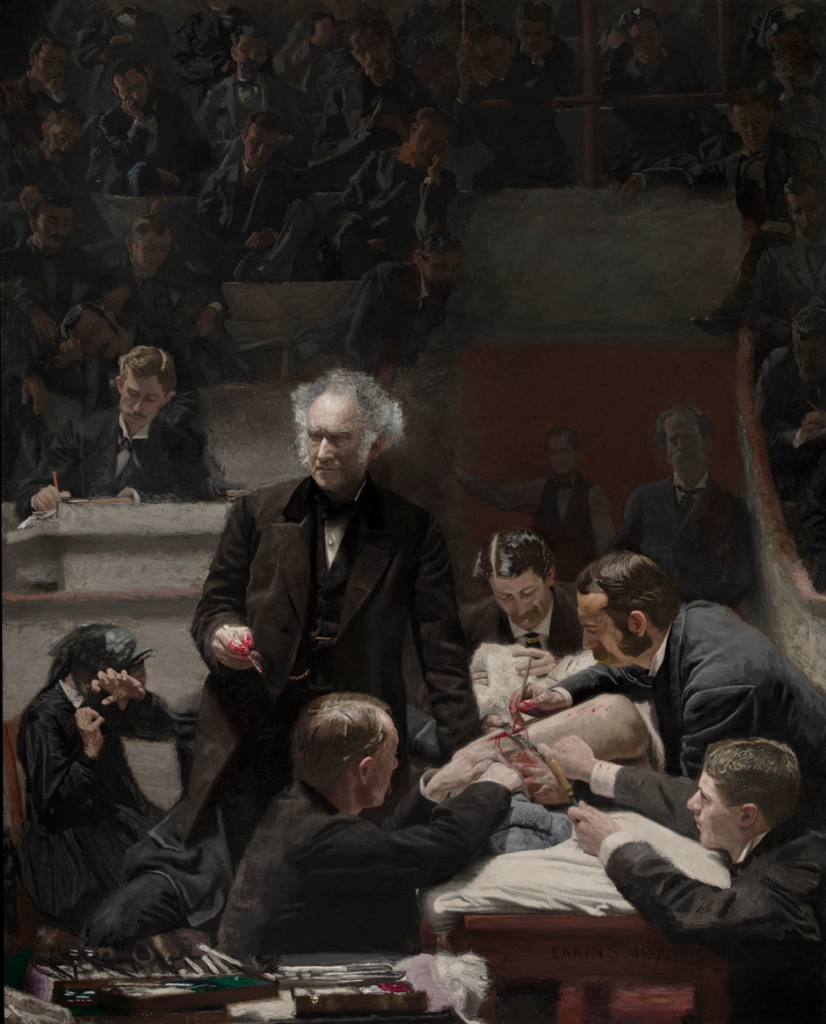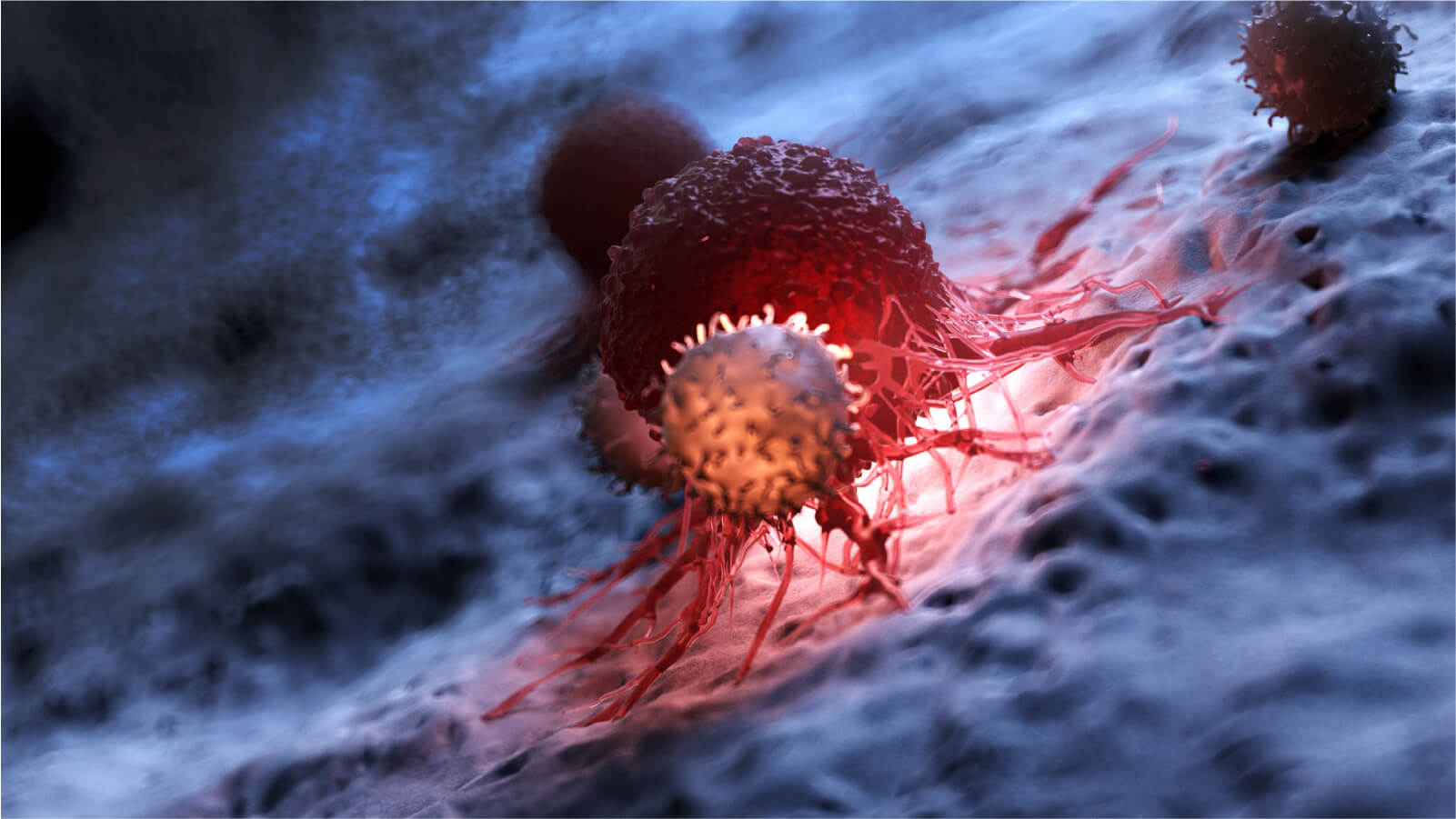
Q1. What do you see in this painting?
A1. There are two groups, one of five men operating on the thigh of a patient in the foreground, and in the background, a second group of onlookers seated in a dimly-lit tiered auditorium. A man with a moustache, dark suit and large bow tie seated in brighter light in the front concentrates on recording the scene before him. A woman in a hat is seated to the right of the standing figure. There are instruments and a white cloth on a table in the front of the painting..
Q2. Who is the most important figure? How did you determine which? What is he doing?
A2. The most important figure is Dr. Samuel Gross (as the title indicates), the grey-haired man with a receding hairline and bushy hair standing at the centre of the painting. Not alone is he the only person standing but the light from the top left of the painting highlights his broad forehead, finely chiselled features, and his right blood-stained hand which holds a scalpel also stained with blood, between his thumb and index finger. We are looking at the moment when, having made an incision on the patient’s thigh, he has stopped operating to speak in the direction of onlookers on our side of the picture frame. He is clearly in charge, while the other men assist. Some hold retractors, another a scalpel. The seated man with the bent head and hands on a white cloth, is most likely keeping the patient anaesthetised with chloroform.
Q3. What is the reaction of onlookers?
A3. All are concentrating on the operation and listening to Dr. Gross. The only woman in the room recoils in horror at the scene and the sight of blood.
Q4. Do you notice anything in particular about the clothing of people in the painting??
A4. All are wearing street clothes that were worn about 200 years ago. None are wearing either surgical gloves or masks.
Note: Samuel Gross (1805-1884) was a surgeon at the Pennsylvania Academy of Medicine. He was also a teacher who tried to reform the medical curriculum putting it on a more scholarly and scientific footing. Yet he disputed Lister’s and Pasteur’s theory of microbial infection, hence the lack of any antisepsis in the painting.

